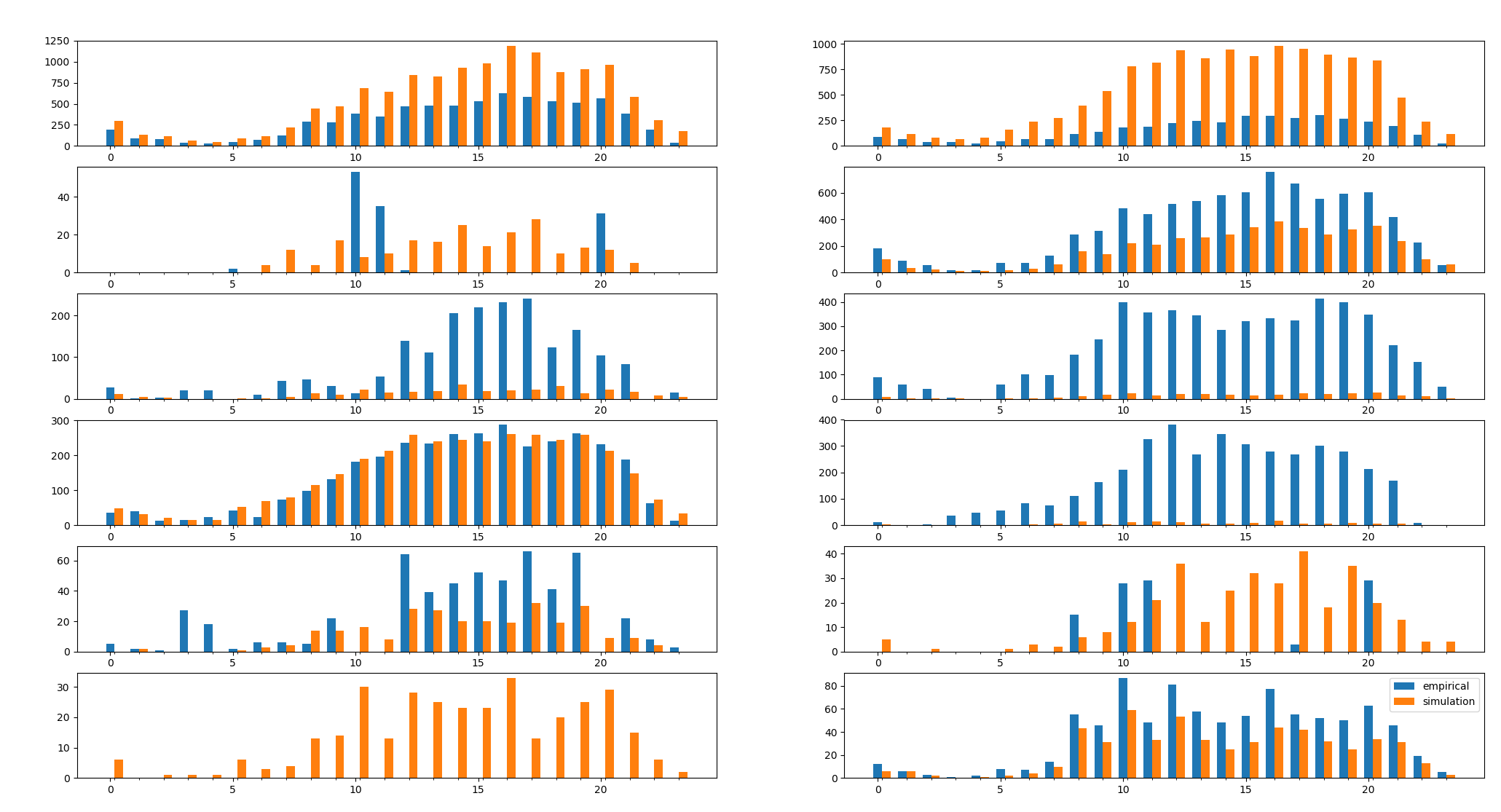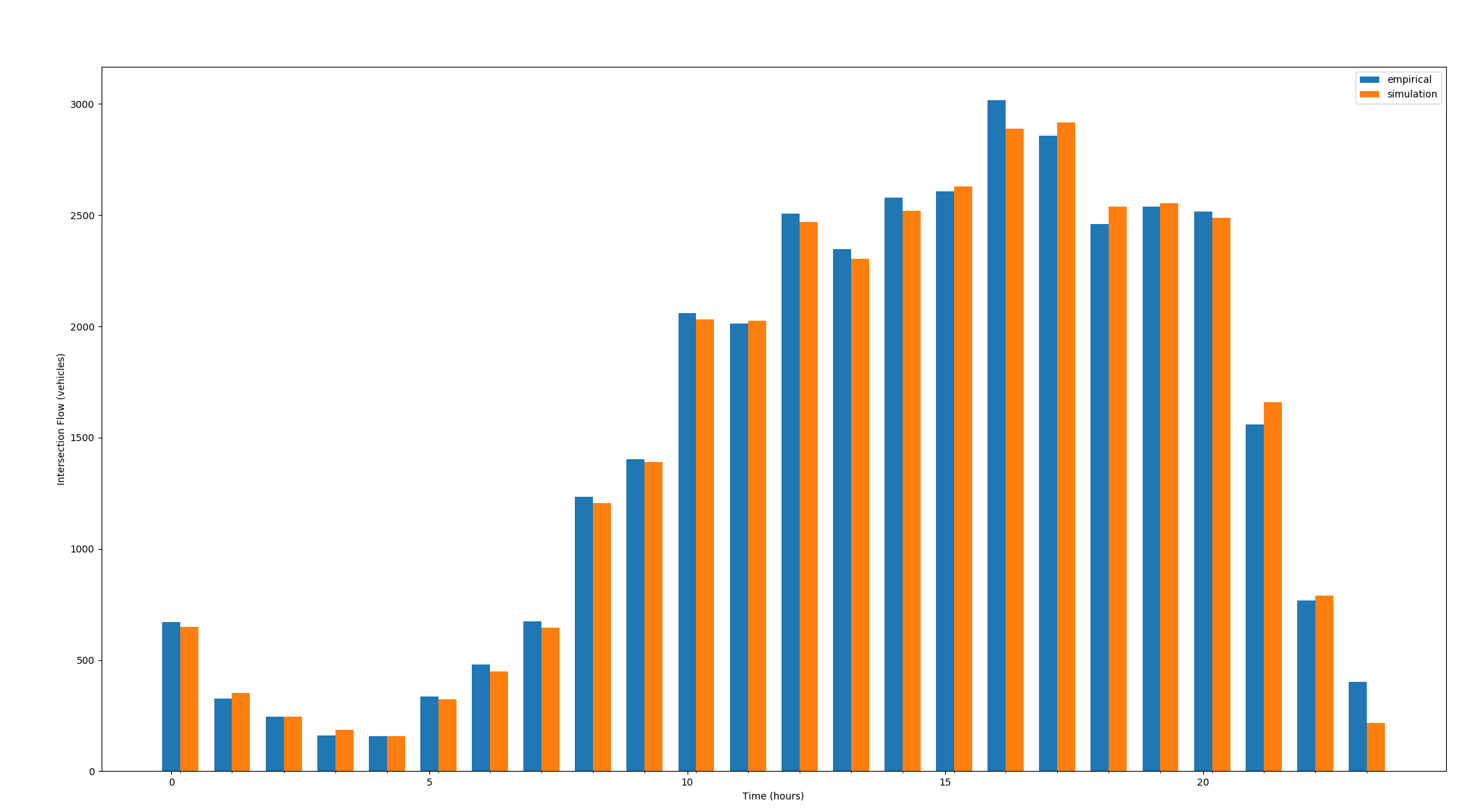Dear All,
I’m currently researching the potential to use micro-simulation and machine learning to optimize traffic signal timing plans for a real-world corridor. We’re running 24-hour simulations of a small road network from real-world detector data and using that to discover the optimal timing plan (e.g. what should the signal timing settings be for every hour of the day). We’ve run into problems specifically around simulation accuracy.
Using real-world detector data to generate vehicle flows for a corridor
We’re currently using high-resolution detector data to try to build accurate micro-simulations of the road network. We have we have real-world historical detector data at a 0.1s resolution for every signalized intersection. We are currently focusing on a corridor with 5 signalized intersections. We are using flowrouter.py to generate the vehicle flows but the simulations created are significantly different to the observed real world flows. Does anybody with experience of generating micro-simulations from real-world detector data have any ideas about why our simulation wouldn’t be working accurately? Below is the chart of what we’ve observed for all of the detectors at a single intersection.
Incidentally we are seeing that the vehicle count for the same intersection as a whole is reasonably close on a per hour basis.
Emulating dual-ring traffic signal controllers
We’re using ML approaches to decide on the timing plan for the signals in the corridor in order to minimize travel times (or reduce delay). In the US, traffic controllers are typically set up on an 8-phase dual-ring model which differs from the settings in SUMO (SUMO appears to be essentially a single-ring model). Does anybody know if there are any simple ways to create dual-ring traffic controllers in SUMO?
As an aside, we’re currently working on an unpaid private research project in partnership with a US State Transport Agency to see how these types of optimizations perform in the real-world. We’re hacking together a prototype that will then be tested on a live, real-world roadway. I know a lot of people in this mailing list have used SUMO to build ML/RL trained signal controllers and if you would like to find out how some of these approaches actually perform in reality, let me know, we’d love to find more collaborators and contributors to the project.
Jatish
![]()


